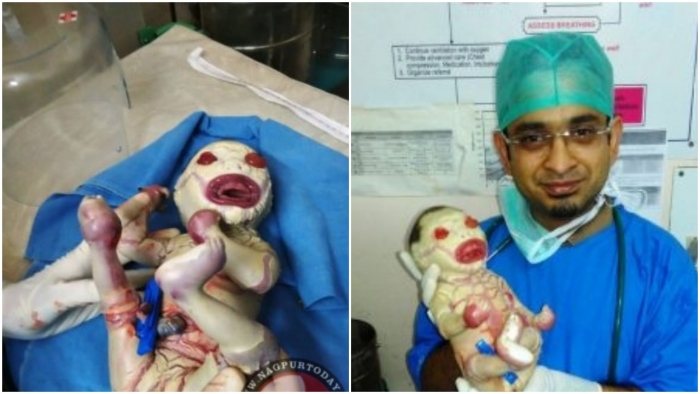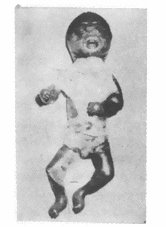
Nagpur baby not the first Harlequin child in India
A baby girl born in a city hospital in Nagpur is not the the first harlequin child in India as was reported by many a publication. The Nagpur baby was born at around 12.25 AM on Saturday at the Lata Mangeshkar Medical College and Hospital, the first baby of a farmer couple.
Harlequin Ichthyosis is considered the most drastic of the Ichthyosis group of diseases which have dry, scaly skin as a common feature. The disorder gets the name after harlequins- the mute characters who appear in traditional pantomime, often wearing a mask.
The Nagpur child was born with her exterior skin almost completely missing. The fingers, toes and palms of the child are severely under-developed while two reddish swabs take the place of the eyes. The ears too are almost non-existent.
Case of Harlequin Ichthyosis in India reported over two decades back

While the Nagpur child presents a grotesque medical condition, this is not the first such case in India. A paper detailing similar cases in India appeared in the journal, The Indian Journal of Pediatrics(November 1983, Volume 59, Issue 6, pp 679 to 683). It was written by the doctors, P.Madhavachandran Nair, K.Sabrinath and V.G.Chellam.
In the paper, the authors relate how five cases of Ichthyosis happened in the span of a single year(1982-1983) in S.A.T Hospital, Trivandrum. Out of these five, three were cases of Harlequin Ichthyosis. That’s a significantly large number considering the fact that a harlequin fetus is a rarity-limited to 1 in 3,00,000 population.
The authors cite the first of the babies to be born in January, 1982 – a girl child born to a 28 year old. That child too had a grotesque appearance with distorted facial features, note the authors.They also mention how ectropion and chemosis were bad enough in the baby that the eyes were just slits beneath the edematous lids. Meanwhile, the wide open mouth was large whereas the nasal bridge was completely depressed with two holes in place of the external nostrils. The external ears were flush with folds constituting the surrounding skin.
Eyebrows and lashes were non-existent in the child. A deep fissure appeared on the scalp and the scalp hair was minimal. The skin was covered with dry and yellowish brown polygonal scales that were separated by cracks and also deep fissures which stretched to the dermis.
The doctors also note how the baby’s movements were restricted because of the hard coating on the skin. Though the child initially cried in a hoarse voice and made sucking movements, her respiration progressively deteriorated in the following days. On the sixth day since birth, the child expired.
Doctors to diagnose congenital deformities in the Nagpur baby
Reports suggest that the Nagpur baby, who was born after a Caesarean section has not developed any respiratory issues. And the doctors at the hospital will diagnose the congenital deformities.
The baby is currently kept under observation since continual care is required for protecting the skin.
Image credits: Nagpur Today, The Indian Journal of Pediatrics